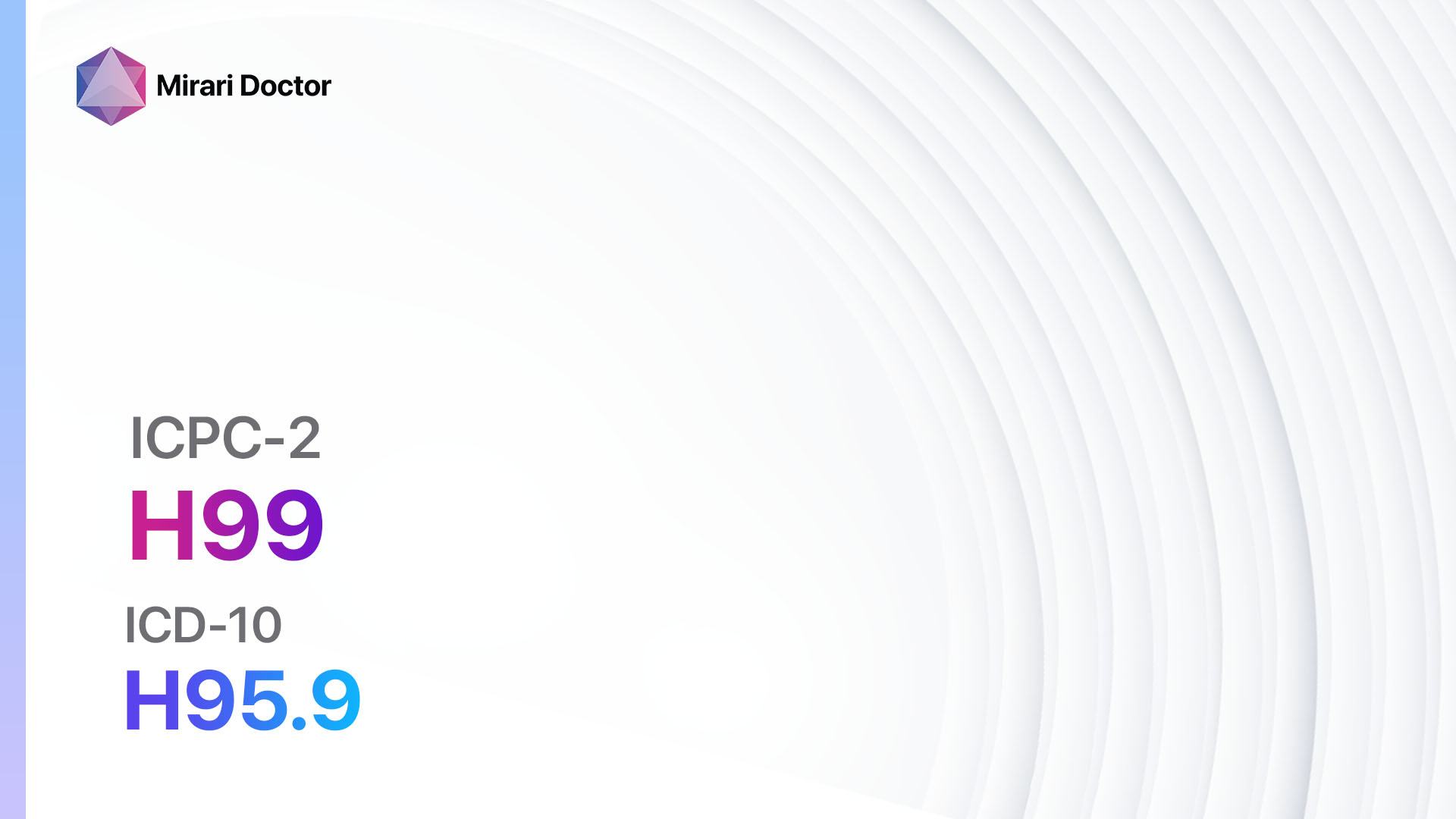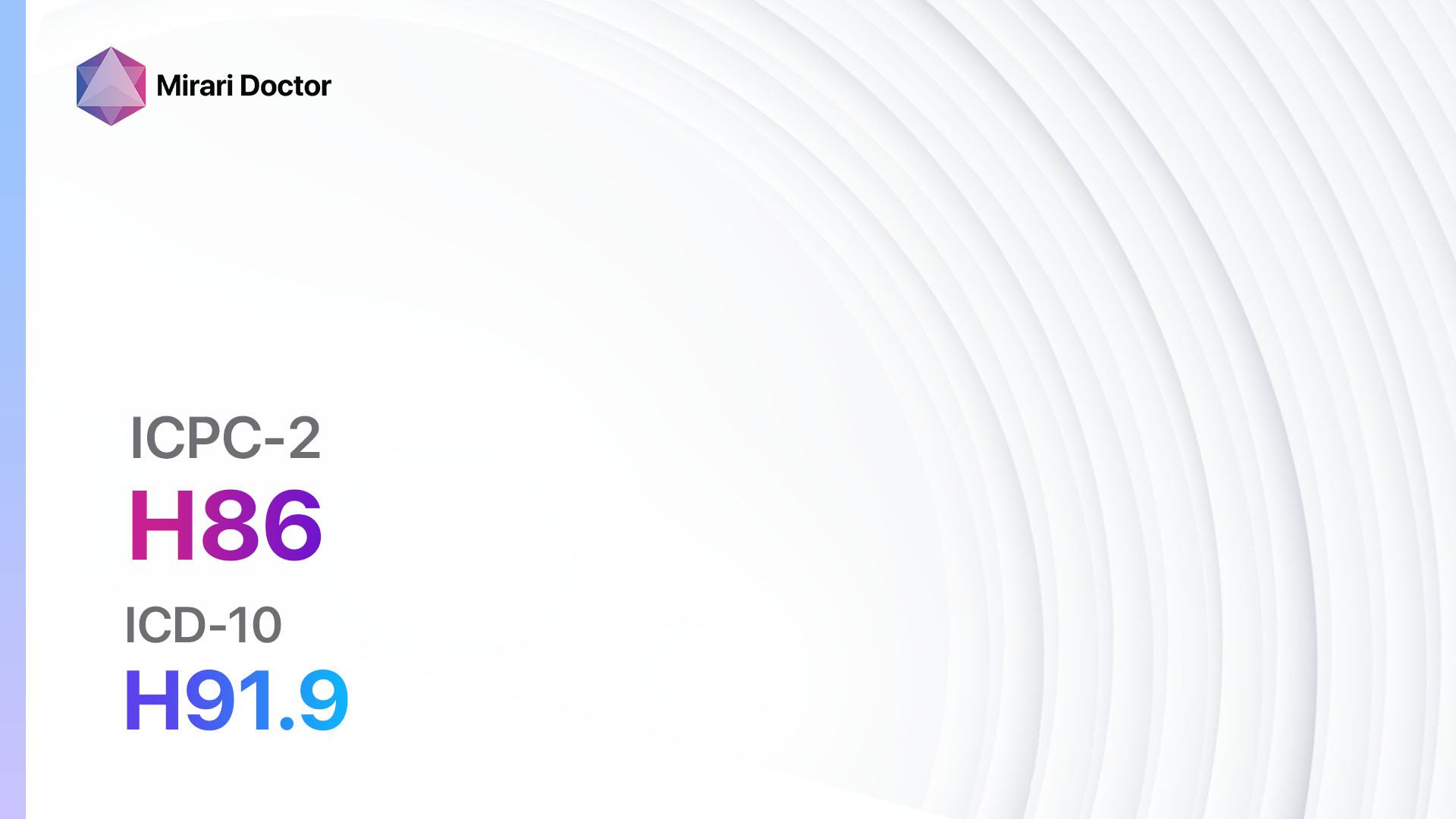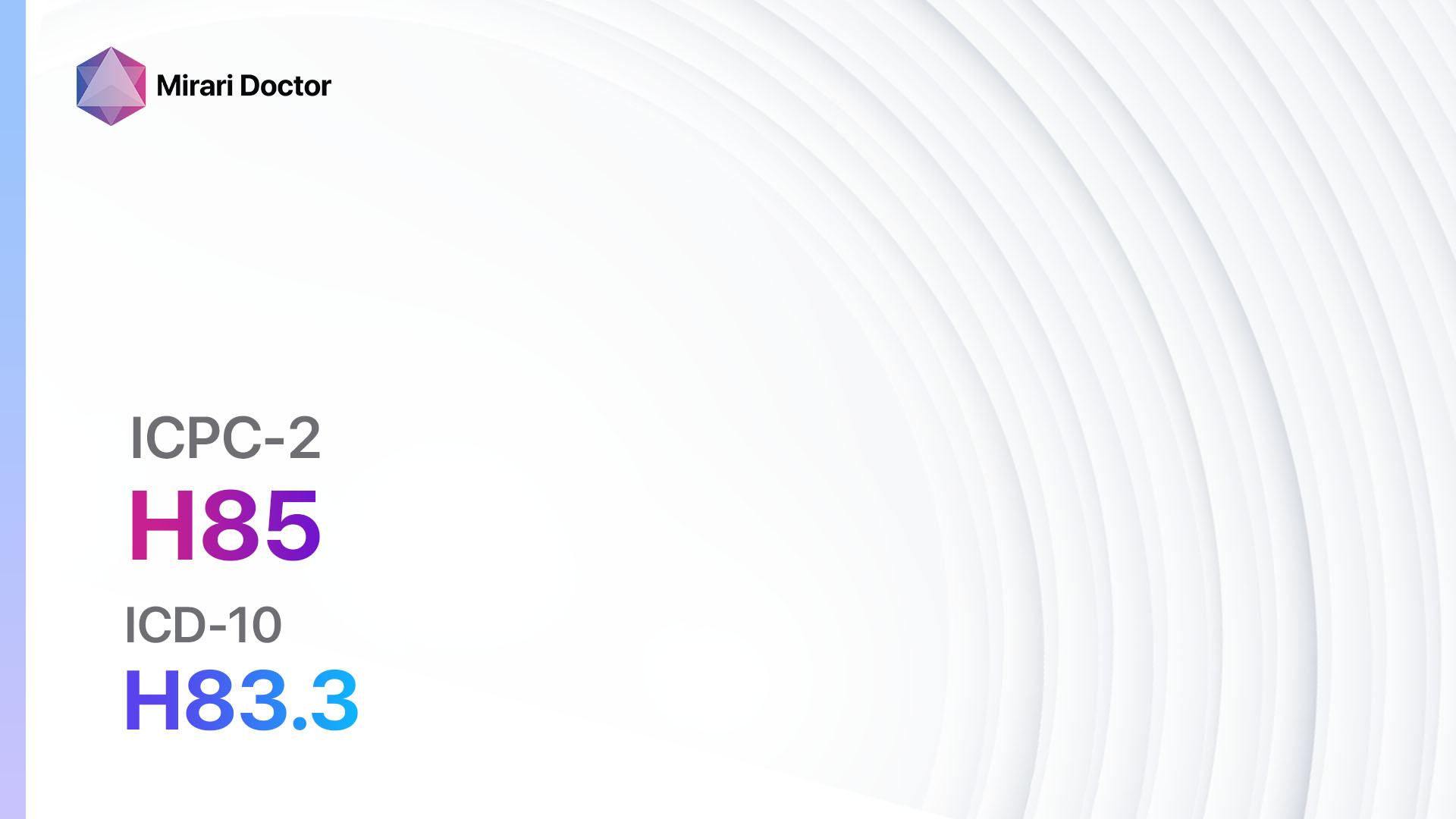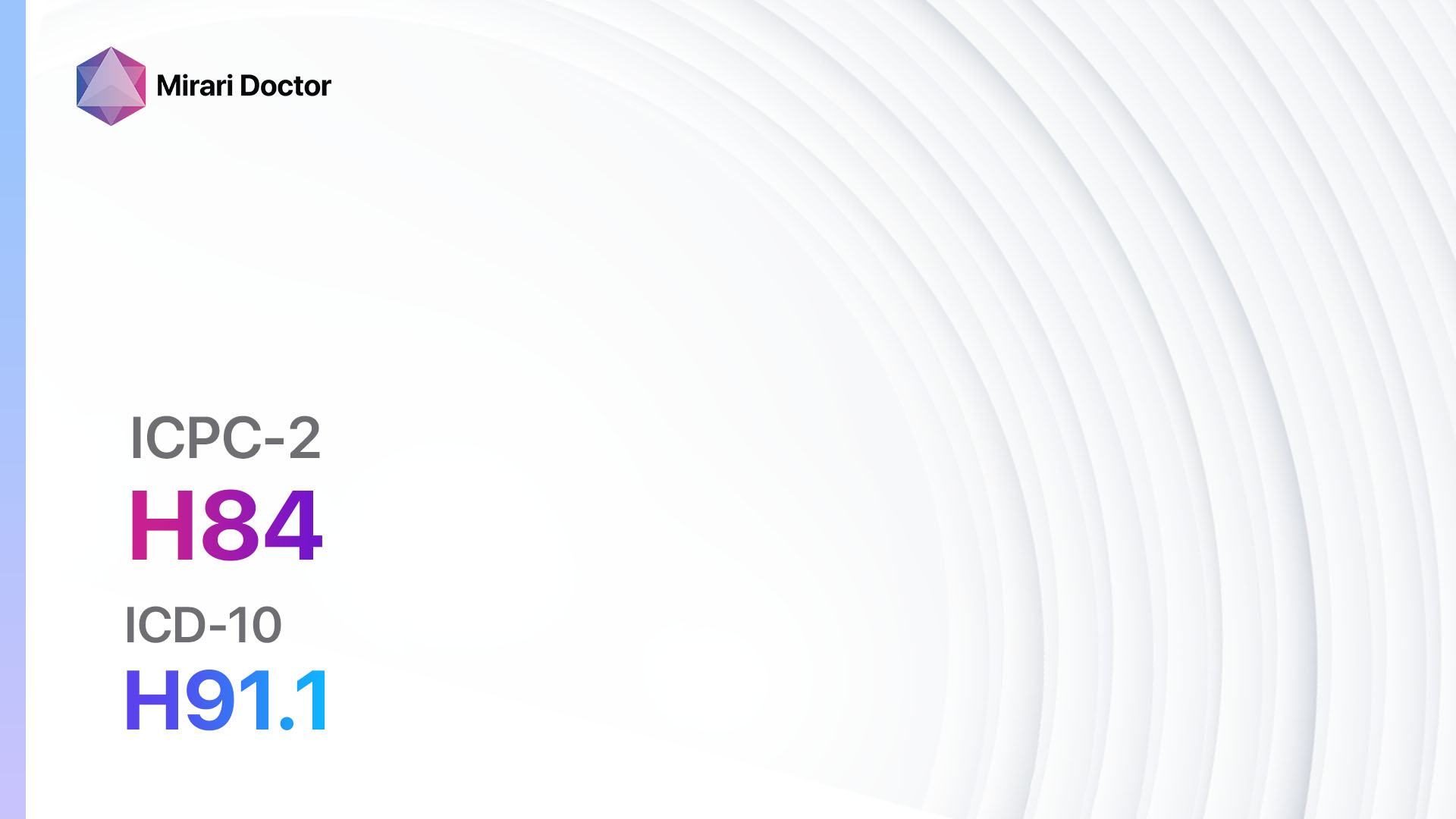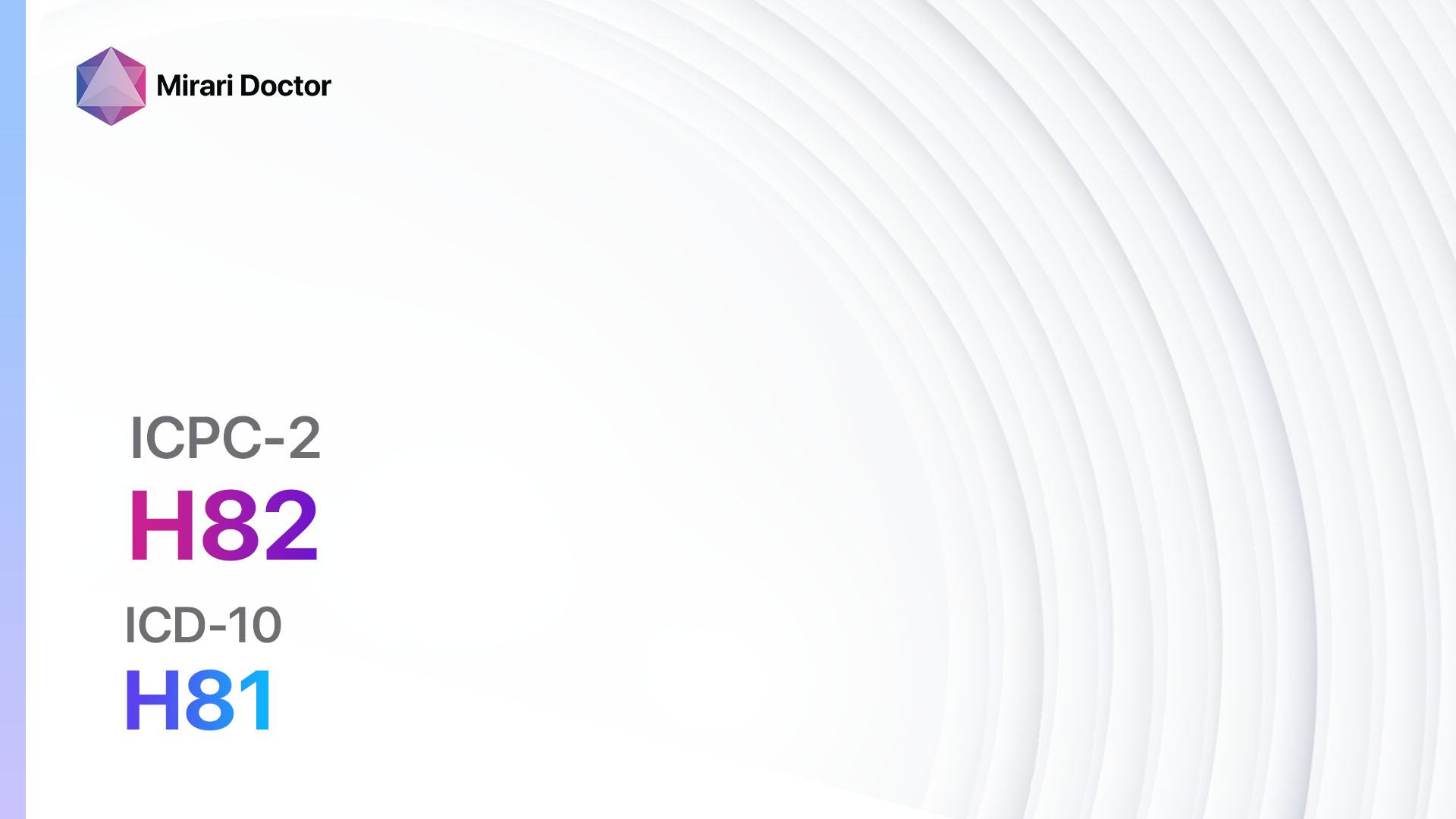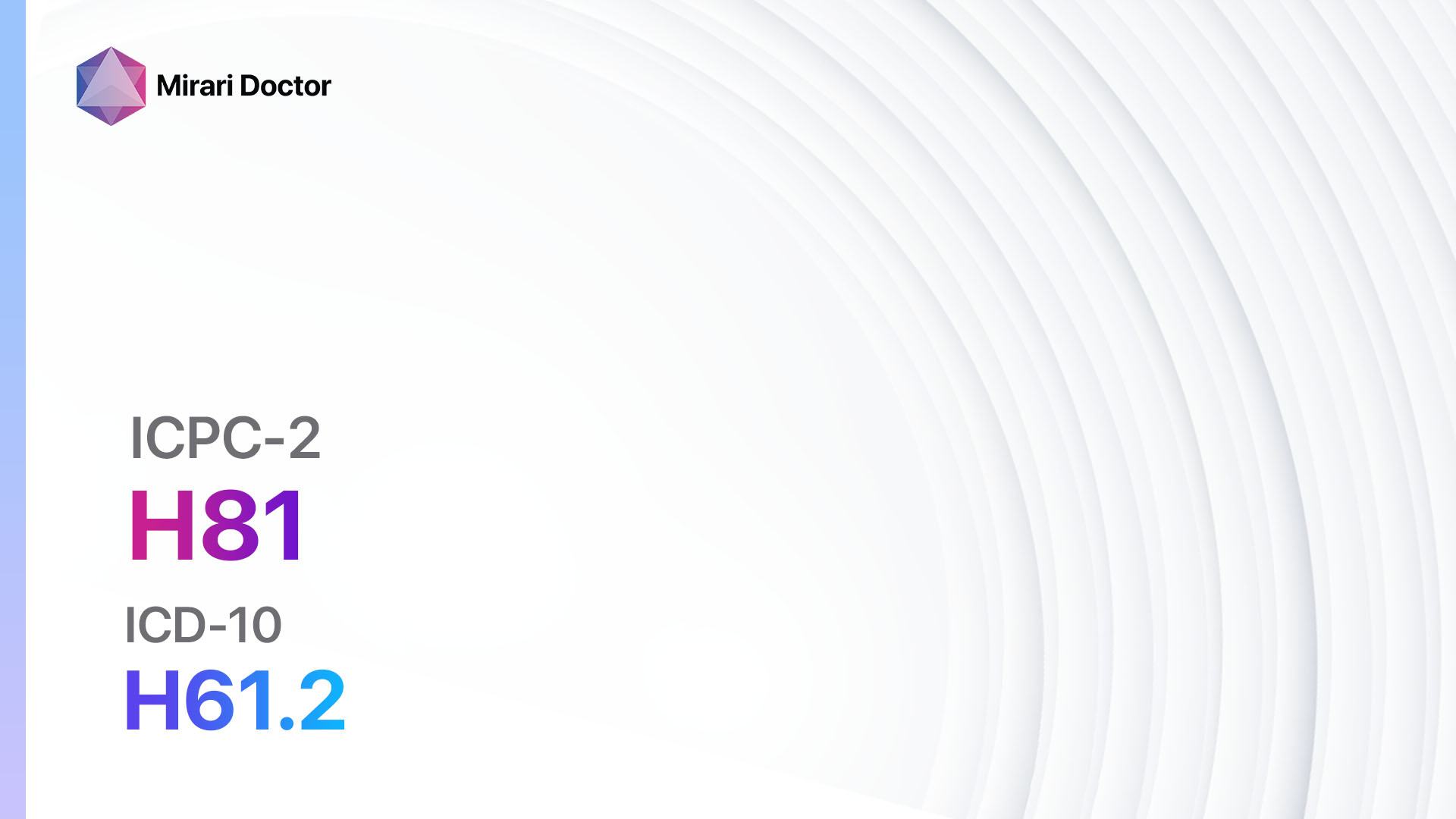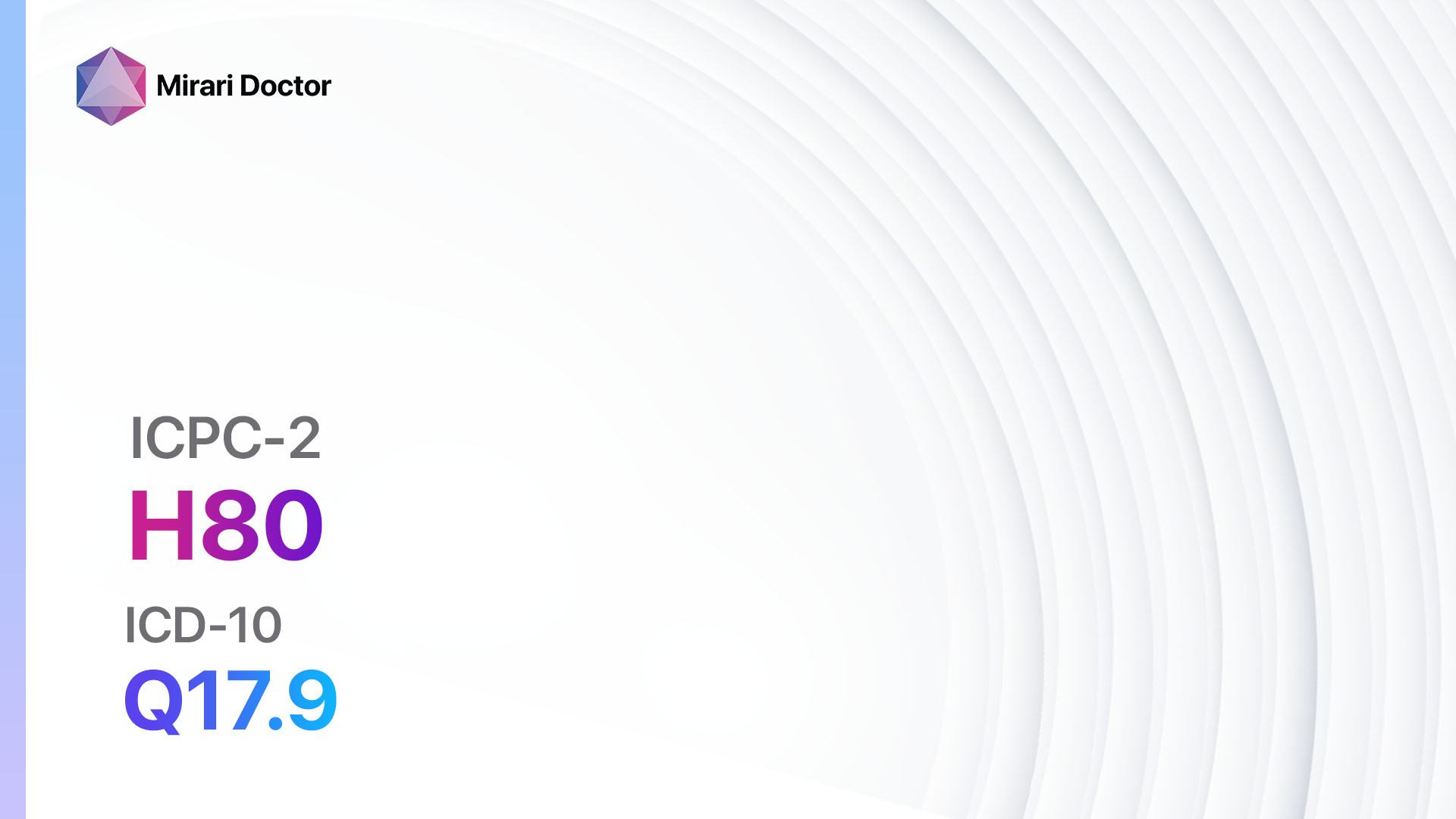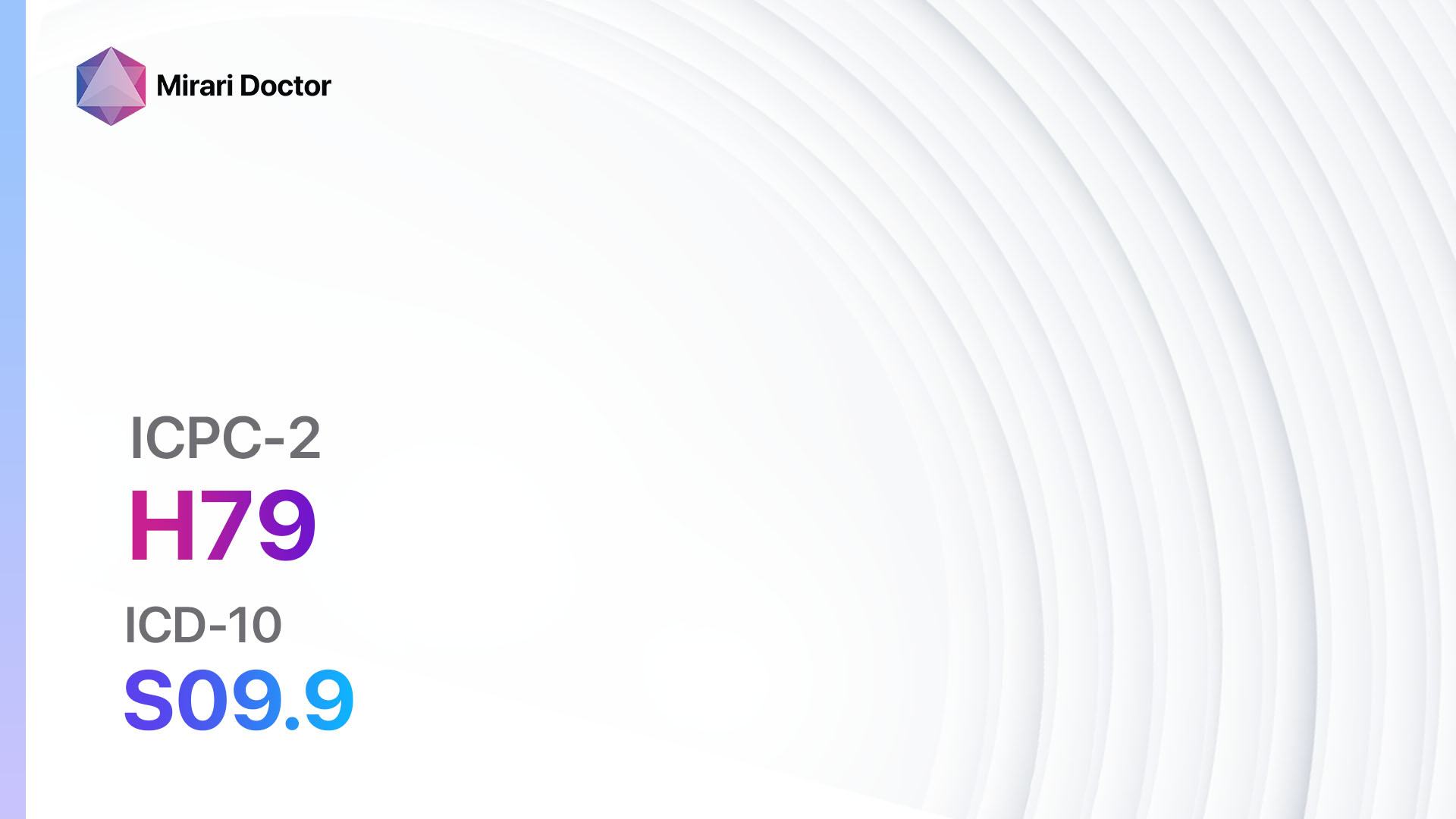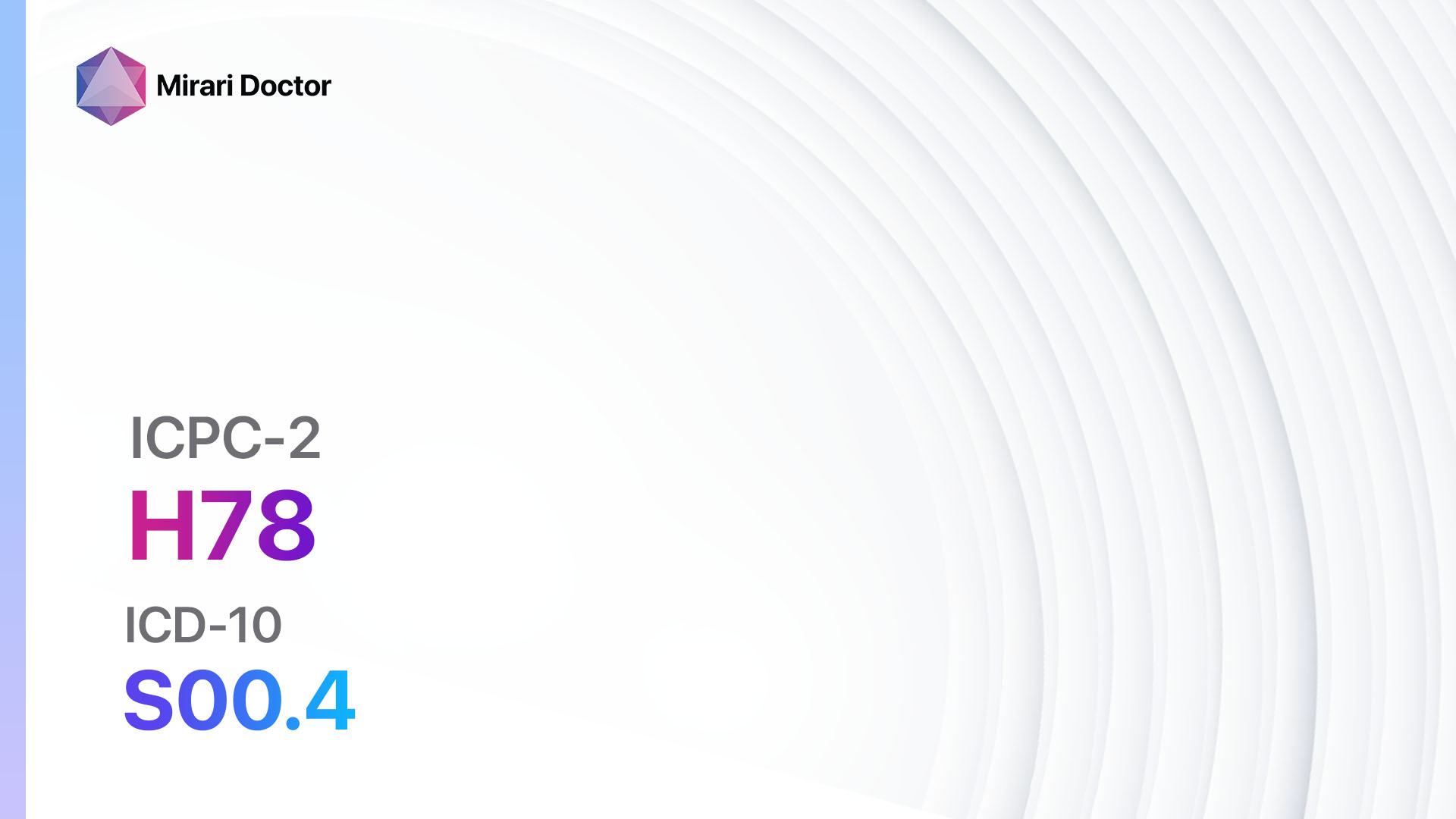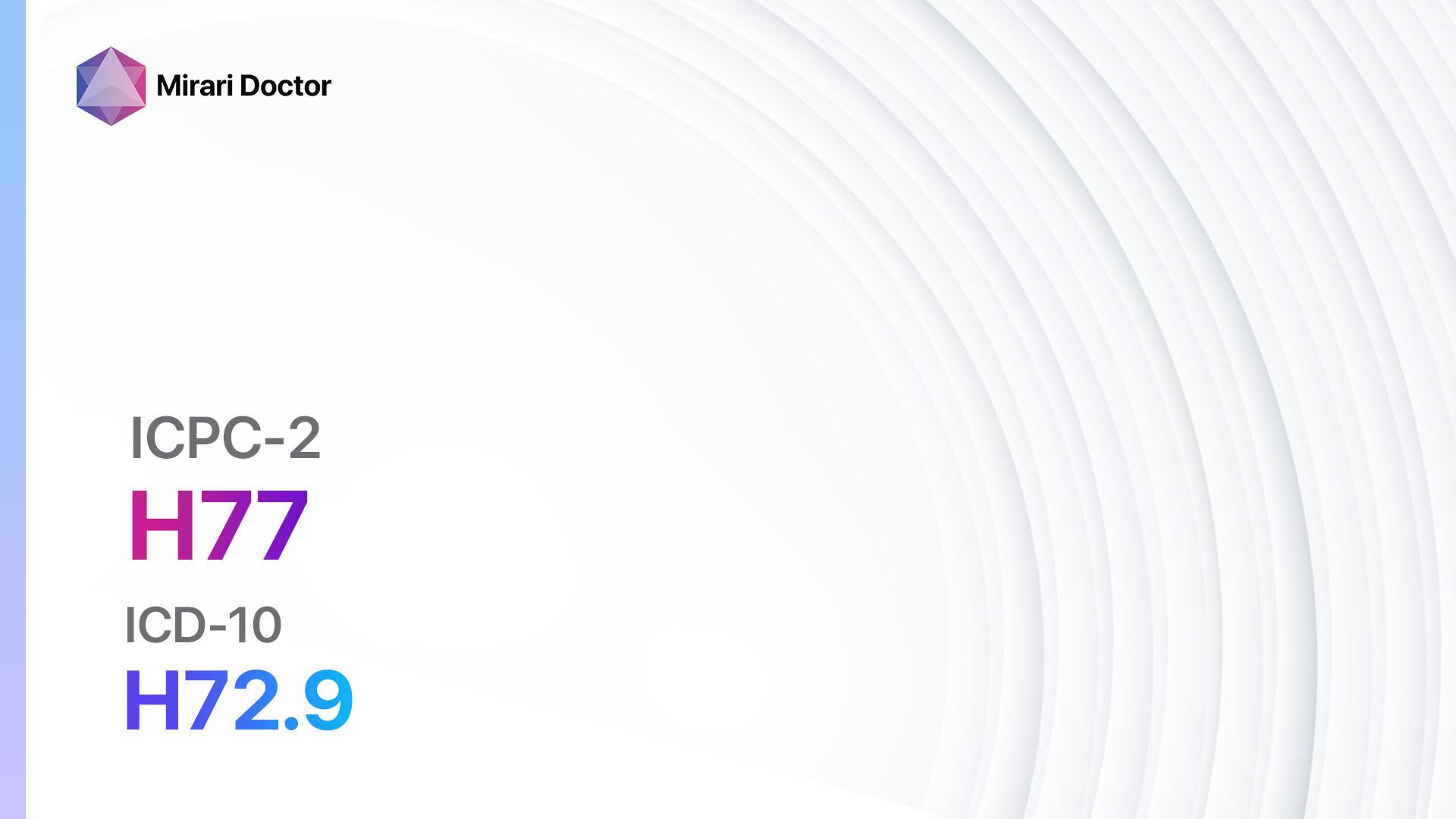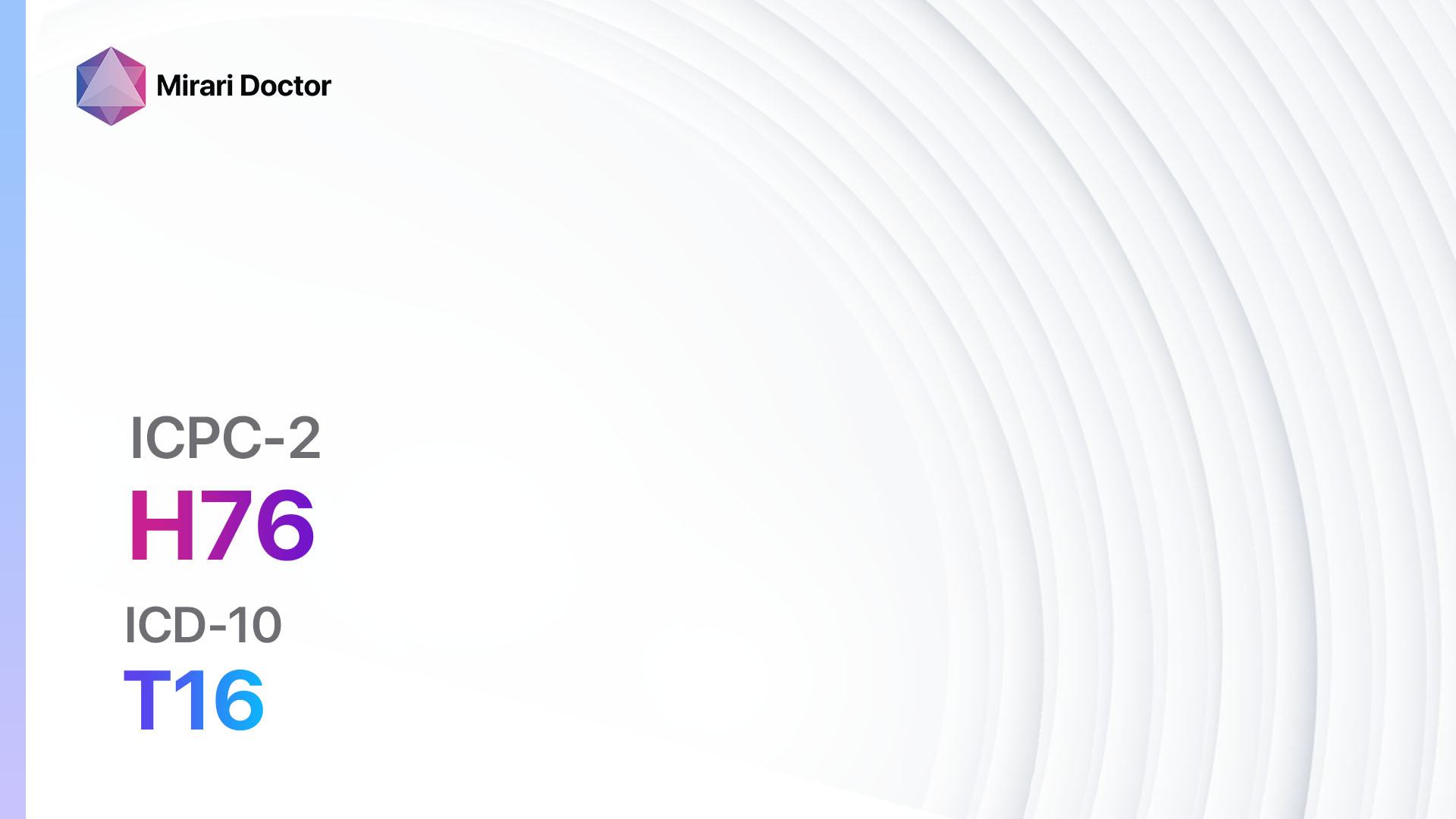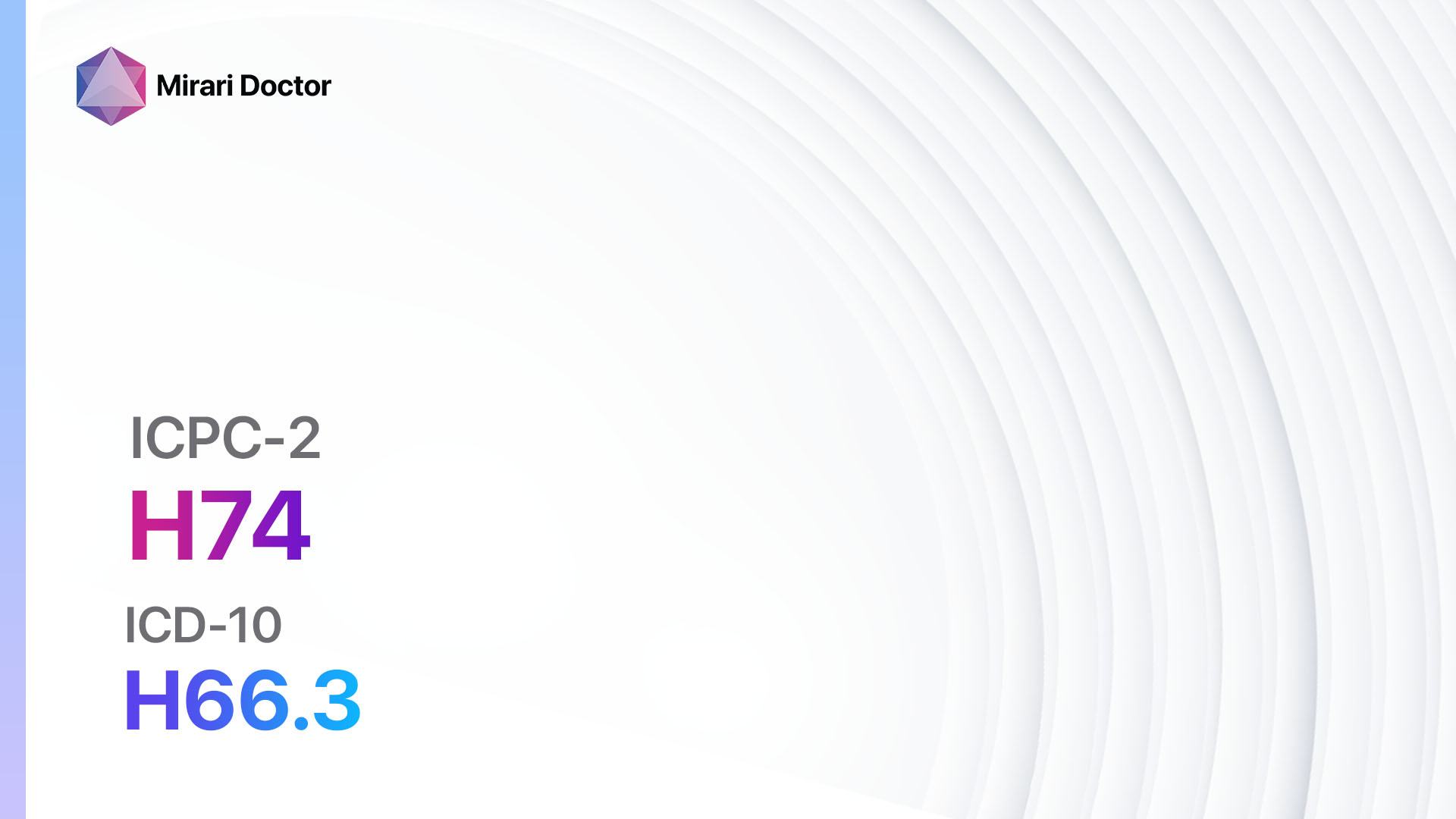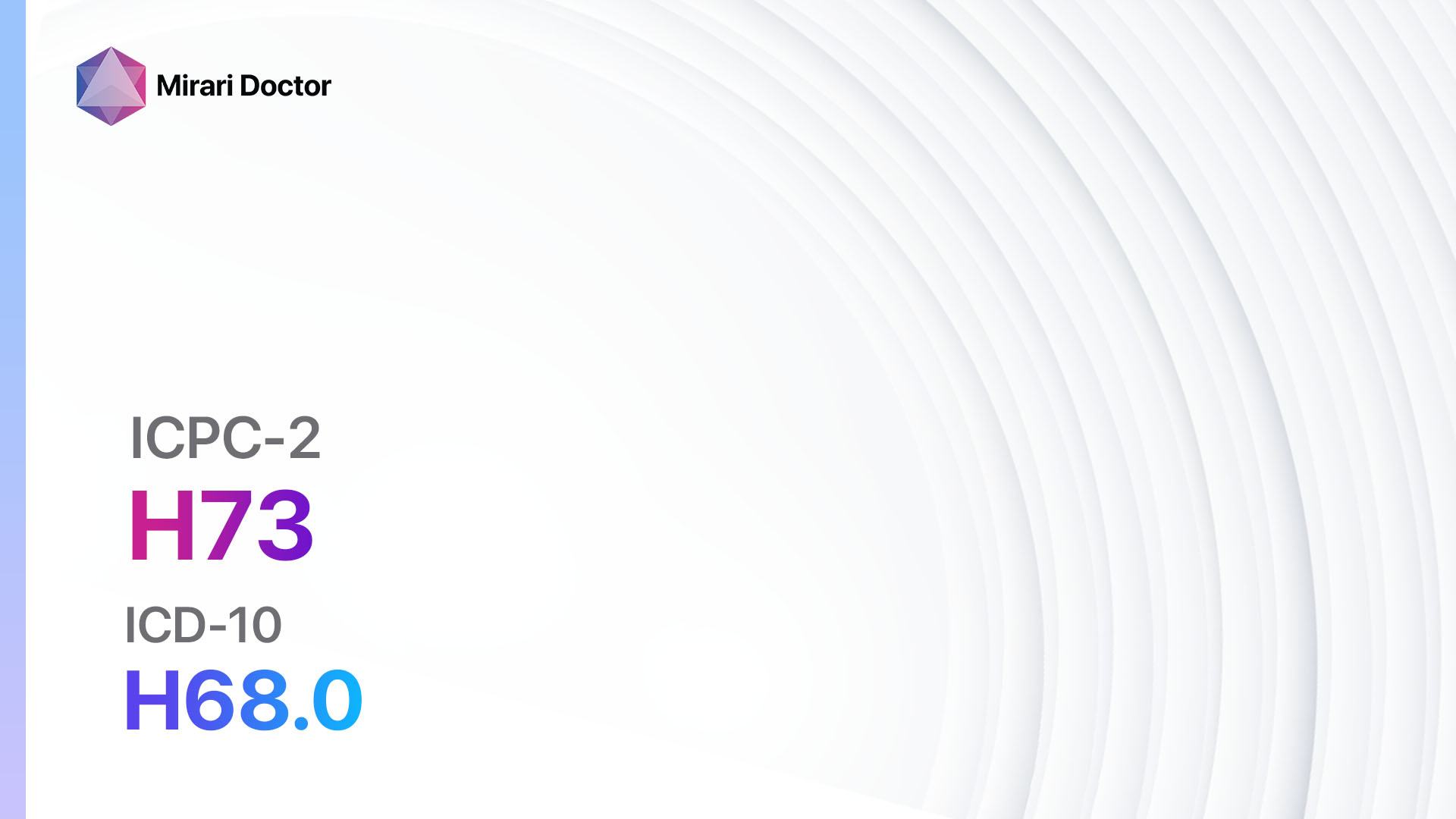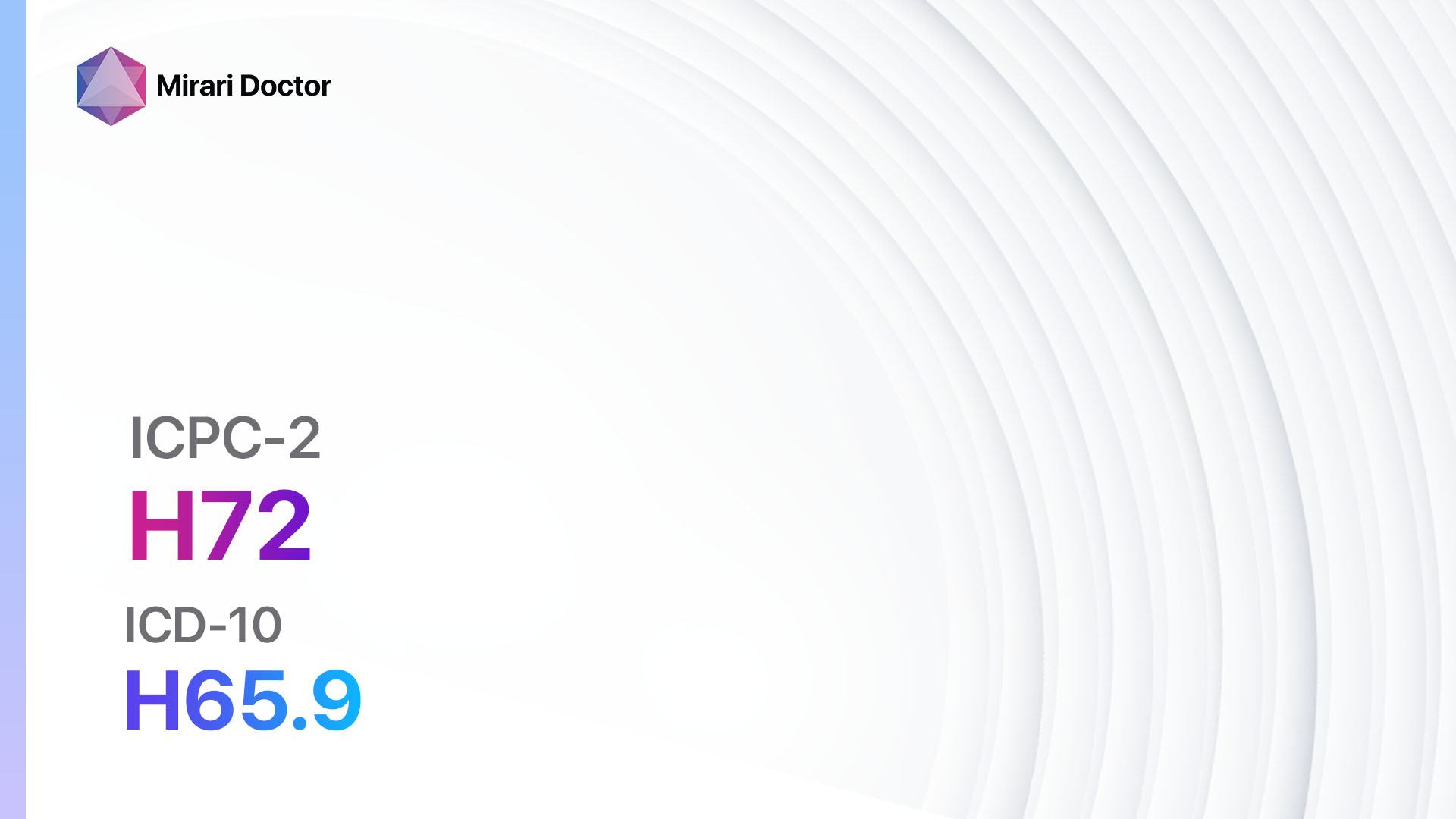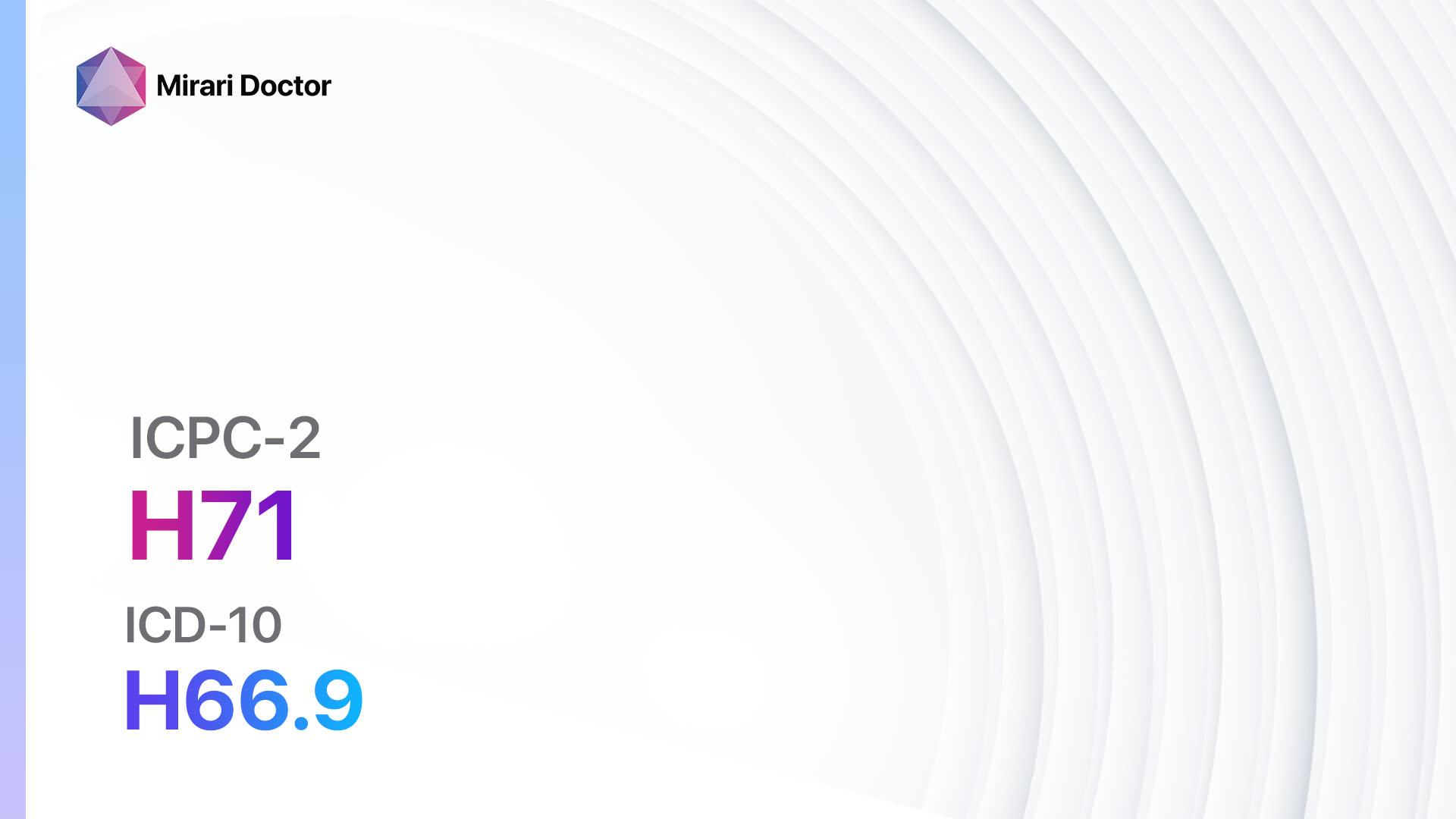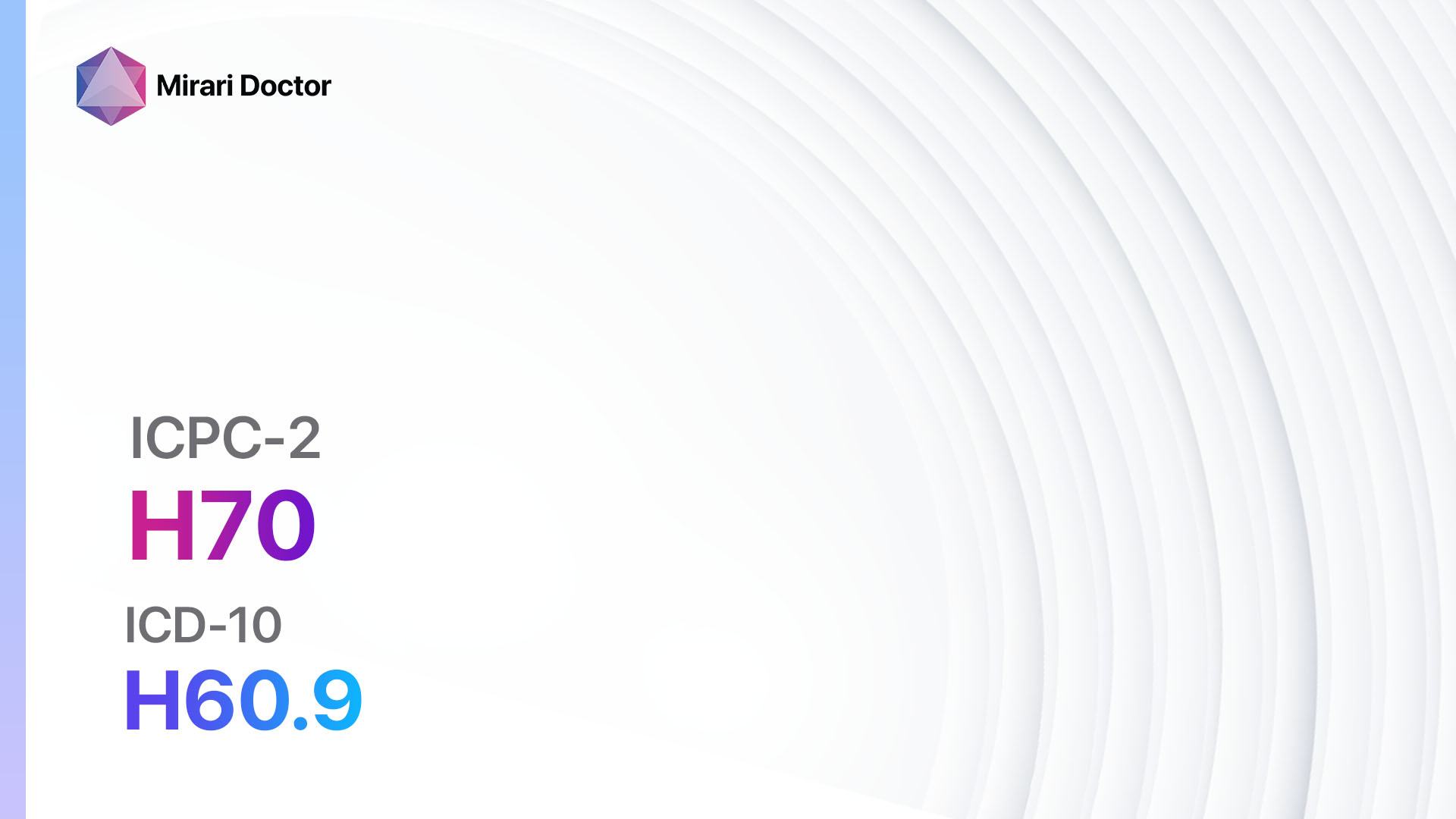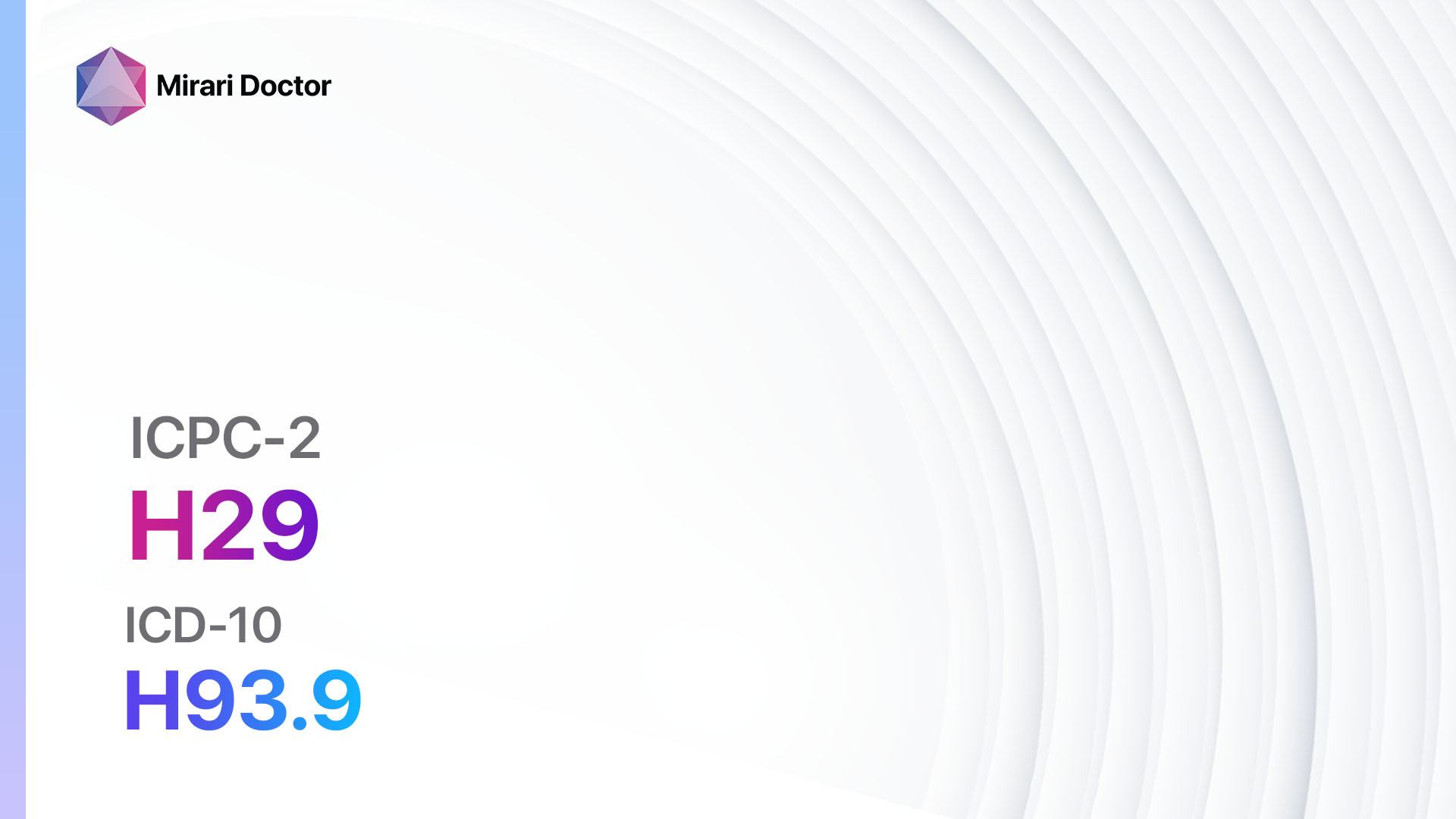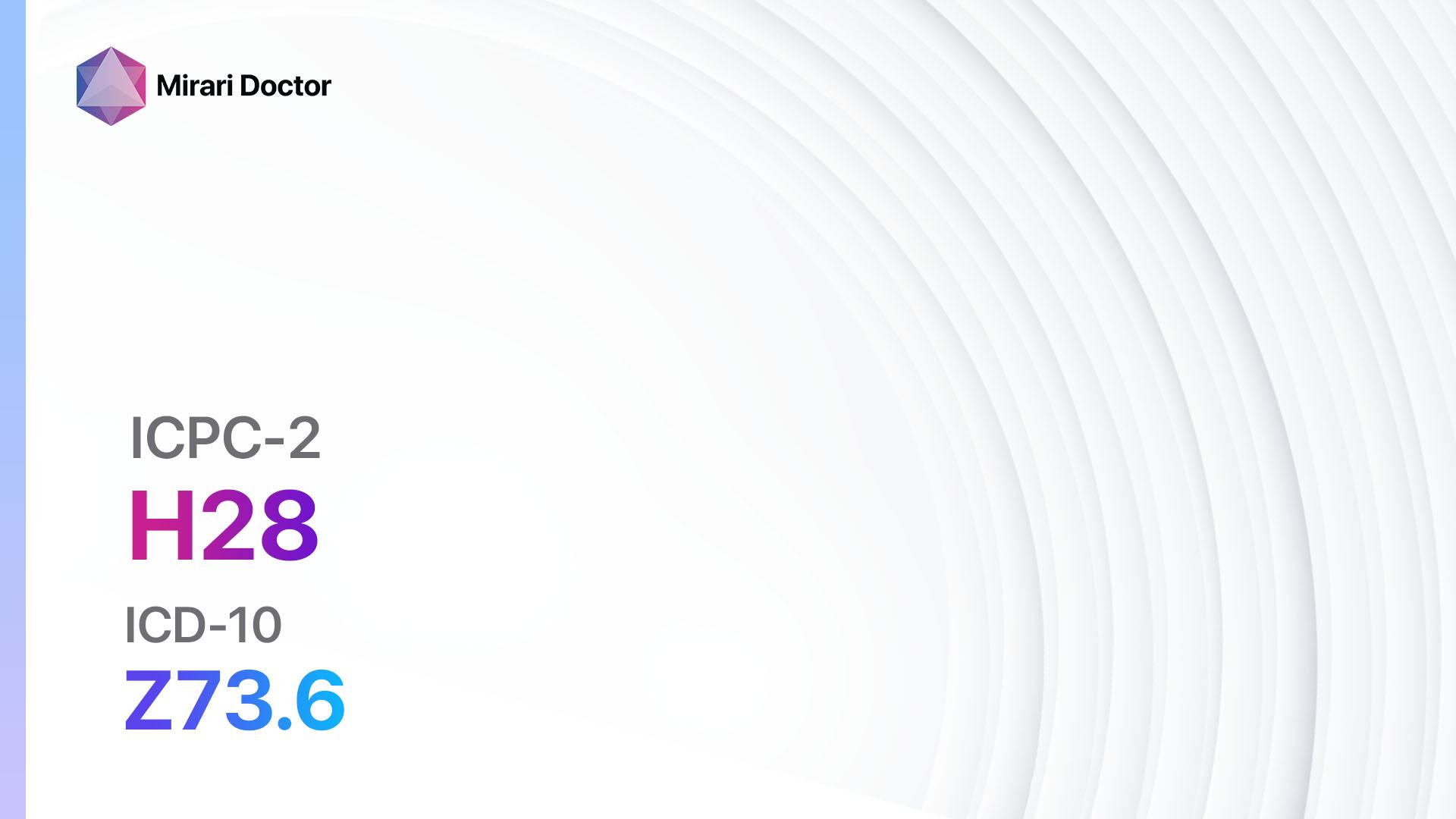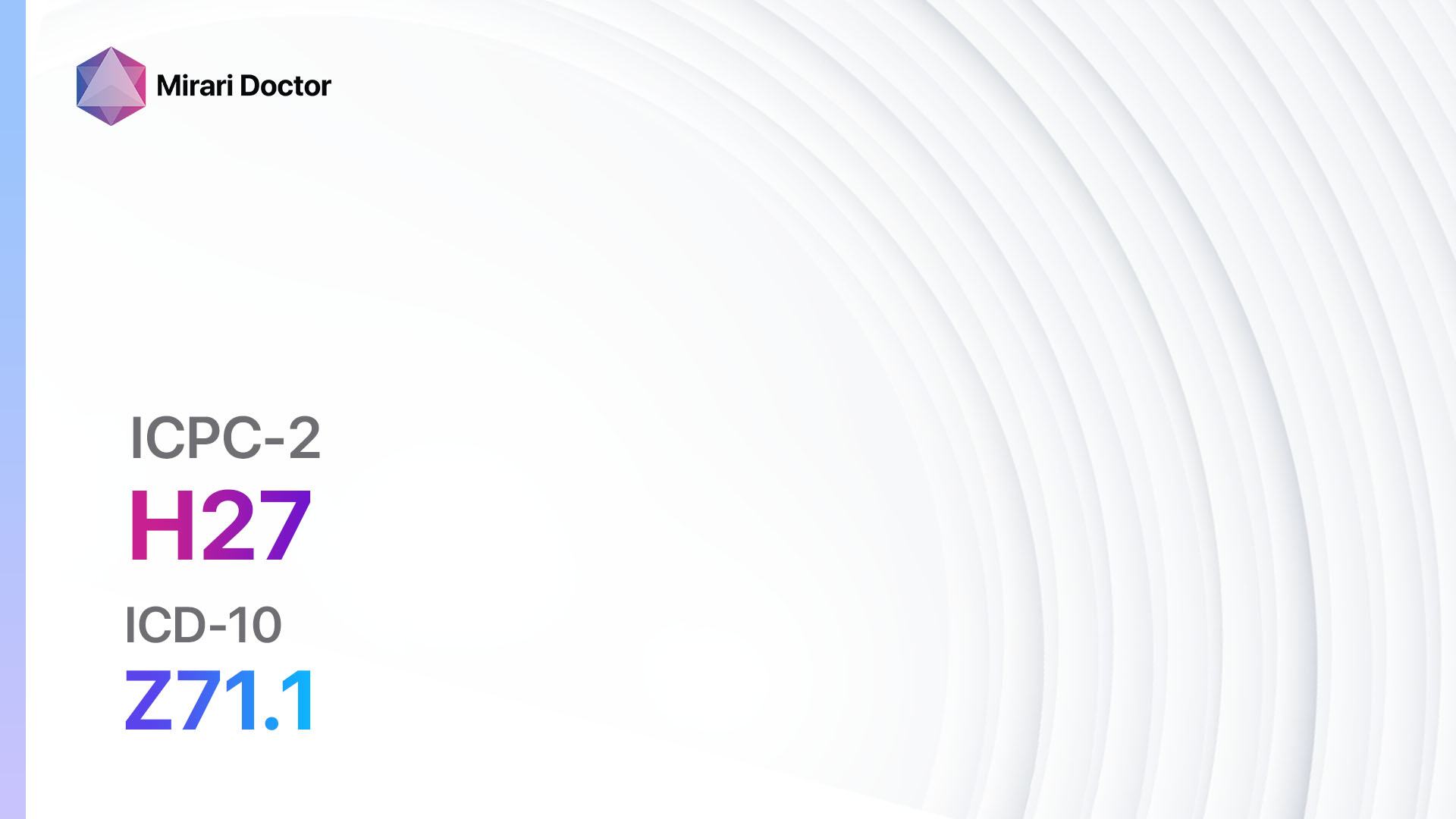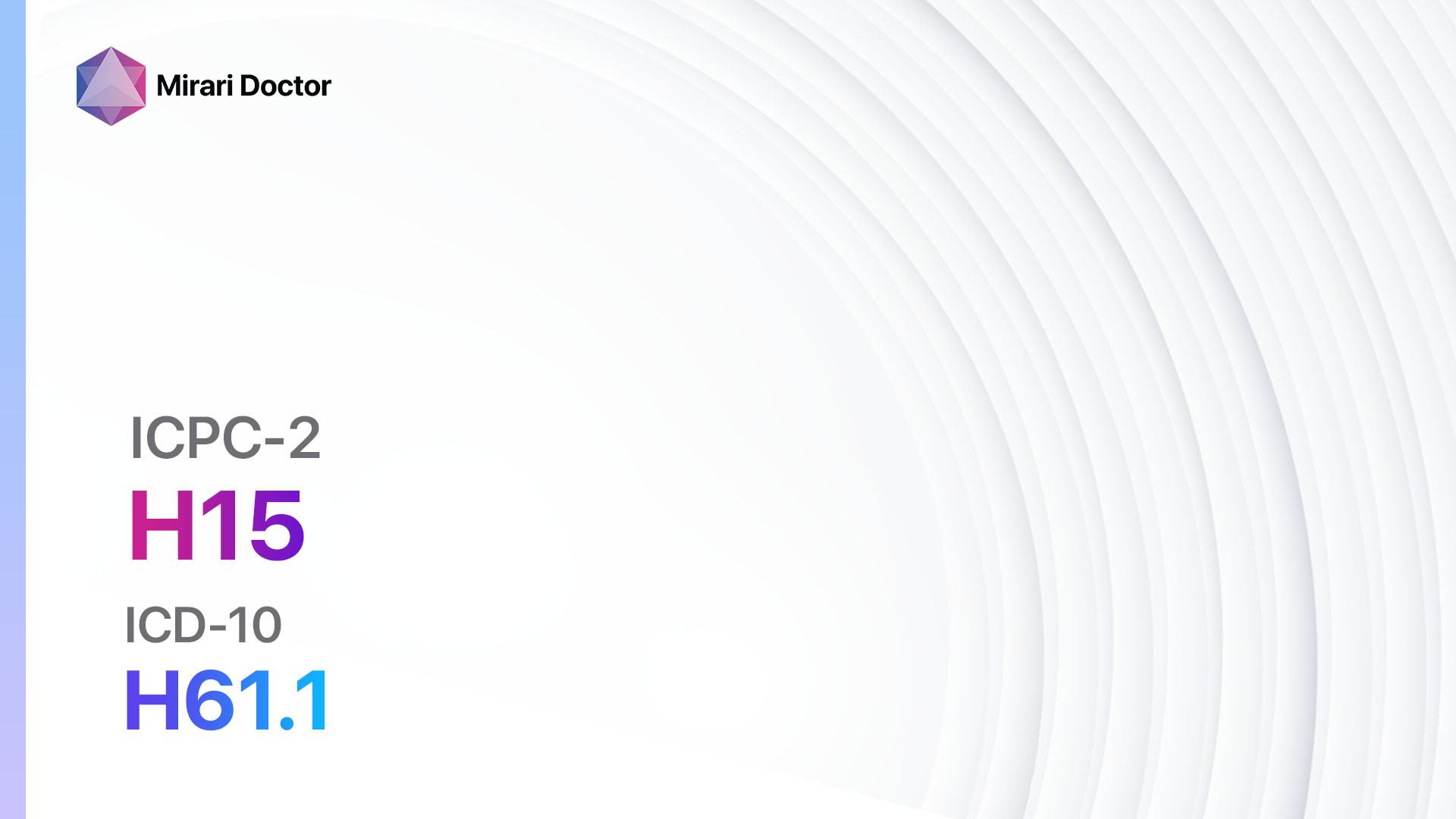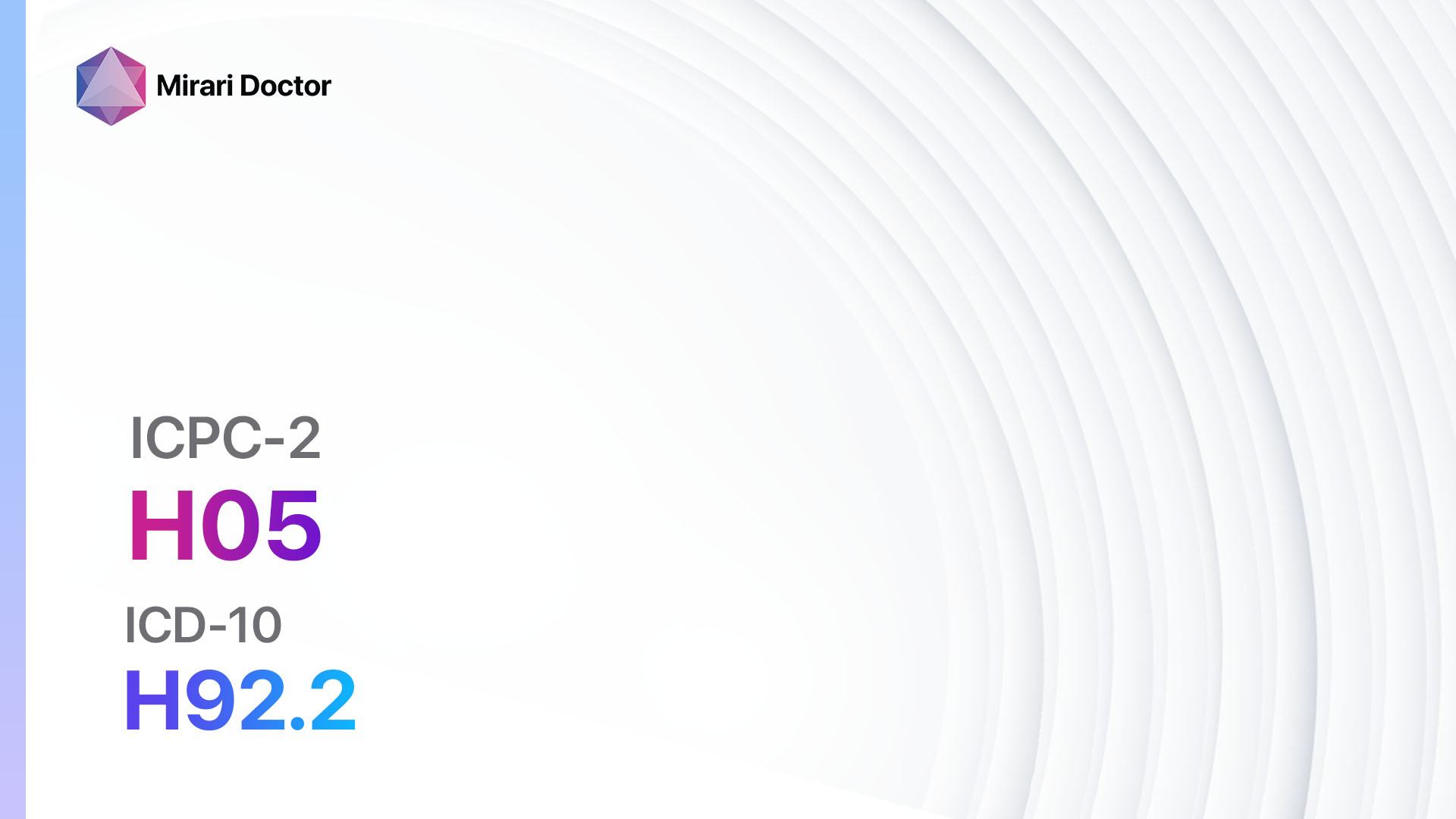
Introduction
Plugged feeling ear, also known as aural fullness, is a common symptom that can be caused by various factors. It is characterized by a sensation of pressure or fullness in the ear, similar to the feeling of having water or wax in the ear. This guide aims to provide an overview of the symptoms, causes, diagnostic steps, possible interventions, and lifestyle interventions for plugged feeling ear.
Codes
Symptoms
- Sensation of pressure or fullness in the ear[1]
- Muffled or decreased hearing[2]
- Tinnitus (ringing or buzzing sound in the ear)[3]
- Ear pain or discomfort[4]
- Dizziness or imbalance[5]
Causes
- Eustachian tube dysfunction: The Eustachian tube, which connects the middle ear to the back of the throat, helps equalize pressure in the ear. Dysfunction of this tube can lead to a plugged feeling ear.[6]
- Earwax buildup: Excessive earwax can block the ear canal and cause a sensation of fullness.[7]
- Sinus congestion: Nasal congestion or sinusitis can affect the Eustachian tube and lead to a plugged feeling ear.[8]
- Middle ear infection: Infections in the middle ear can cause fluid buildup and result in a sensation of pressure or fullness.[9]
- Allergies: Allergic reactions can cause inflammation and congestion in the nasal passages and Eustachian tube, leading to a plugged feeling ear[10]
- Temporomandibular joint (TMJ) disorder: Dysfunction of the TMJ, which connects the jaw to the skull, can cause referred pain and a plugged feeling ear.
Diagnostic Steps
Medical History
- Gather information about the duration and severity of the plugged feeling ear.
- Inquire about any recent upper respiratory infections, allergies, or exposure to loud noises.
- Ask about any associated symptoms such as hearing loss, tinnitus, or pain.
- Assess for any underlying medical conditions or risk factors.
Physical Examination
- Inspect the external ear for any signs of inflammation, infection, or wax buildup.
- Perform otoscopy to examine the ear canal and eardrum for abnormalities.
- Evaluate the mobility of the eardrum using pneumatic otoscopy.
- Assess for any tenderness or pain around the temporomandibular joint.
Laboratory Tests
- No specific laboratory tests are typically required for the diagnosis of a plugged feeling ear.
- However, if an infection is suspected, a culture of the ear discharge may be obtained.
Diagnostic Imaging
- Imaging studies are usually not necessary for the diagnosis of a plugged feeling ear.
- However, if there are persistent or severe symptoms, or if other underlying conditions are suspected, imaging modalities such as CT scans or MRIs may be considered.
Other Tests
- Tympanometry: This test measures the movement of the eardrum in response to changes in air pressure, helping to assess the function of the Eustachian tube.
- Audiometry: A hearing test may be performed to evaluate any hearing loss associated with the plugged feeling ear.
Follow-up and Patient Education
- Schedule a follow-up appointment to monitor the progress of symptoms and assess the effectiveness of interventions.
- Provide patient education on the importance of maintaining good ear hygiene, avoiding exposure to loud noises, and managing underlying conditions such as allergies or sinusitis.
Possible Interventions
Traditional Interventions
Medications:
Top 5 drugs for plugged feeling ear:
- Decongestants (e.g., pseudoephedrine):
- Cost: Generic versions can range from $5 to $20.
- Contraindications: Uncontrolled high blood pressure, severe heart disease.
- Side effects: Increased heart rate, elevated blood pressure, insomnia.
- Severe side effects: Severe allergic reactions, hallucinations.
- Drug interactions: MAO inhibitors, certain antidepressants.
- Warning: Prolonged use may lead to rebound congestion.
- Antihistamines (e.g., loratadine, cetirizine):
- Cost: Generic versions can range from $5 to $20.
- Contraindications: Narrow-angle glaucoma, urinary retention.
- Side effects: Drowsiness, dry mouth, blurred vision.
- Severe side effects: Irregular heartbeat, difficulty urinating.
- Drug interactions: Sedatives, tranquilizers, alcohol.
- Warning: May cause drowsiness, avoid driving or operating machinery.
- Steroid nasal sprays (e.g., fluticasone, mometasone):
- Cost: Generic versions can range from $20 to $50.
- Contraindications: Recent nasal surgery or injury.
- Side effects: Nasal irritation, nosebleeds.
- Severe side effects: Adrenal suppression, slowed growth in children.
- Drug interactions: None significant.
- Warning: Regular use is required for optimal effect.
- Earwax removal drops (e.g., carbamide peroxide):
- Cost: Generic versions can range from $5 to $15.
- Contraindications: Perforated eardrum, recent ear surgery.
- Side effects: Temporary discomfort, itching.
- Severe side effects: None reported.
- Drug interactions: None significant.
- Warning: Follow the instructions for proper use and avoid excessive cleaning.
- Pain relievers (e.g., acetaminophen, ibuprofen):
- Cost: Generic versions can range from $5 to $15.
- Contraindications: Allergy to NSAIDs, active stomach ulcers.
- Side effects: Upset stomach, increased bleeding risk.
- Severe side effects: Severe allergic reactions, liver or kidney damage.
- Drug interactions: Blood thinners, certain antidepressants.
- Warning: Follow the recommended dosage and avoid long-term use.
Alternative Drugs:
- Antibiotics: If an ear infection is suspected, antibiotics may be prescribed.
- Oral steroids: In cases of severe inflammation, oral steroids may be considered.
- Antifungal medications: If a fungal infection is suspected, antifungal medications may be prescribed.
Surgical Procedures:
- Myringotomy: A small incision is made in the eardrum to relieve pressure and drain fluid. Cost: $2,000 to $5,000.
- Tympanostomy tubes: Tiny tubes are inserted into the eardrums to allow for drainage and equalization of pressure. Cost: $3,000 to $7,000.
Alternative Interventions
- Nasal irrigation: Flushing the nasal passages with a saline solution can help relieve congestion. Cost: $10 to $20 for a nasal irrigation kit.
- Steam inhalation: Inhaling steam from a bowl of hot water or using a steam inhaler can help open up the Eustachian tube. Cost: $20 to $50 for a steam inhaler.
- Warm compress: Applying a warm compress to the affected ear can help alleviate discomfort and promote drainage. Cost: $5 to $10 for a reusable warm compress.
- Chiropractic adjustments: Manipulation of the neck and spine may help improve Eustachian tube function. Cost: $50 to $100 per session.
- Acupuncture: May help relieve congestion and promote overall balance. Cost: $60 to $120 per session.
Lifestyle Interventions
- Avoidance of allergens: Identifying and avoiding allergens that trigger nasal congestion can help prevent a plugged feeling ear. Cost: Varies depending on the specific allergens.
- Proper ear hygiene: Regular cleaning of the outer ear and avoiding the use of cotton swabs can help prevent earwax buildup. Cost: Minimal.
- Avoidance of loud noises: Protecting the ears from loud noises can help prevent damage to the Eustachian tube and hearing loss. Cost: Varies depending on the specific ear protection devices.
- Nasal saline rinses: Regular use of nasal saline rinses can help keep the nasal passages clear and reduce congestion. Cost: $5 to $15 for a nasal saline rinse kit.
- Stress management: Stress can contribute to Eustachian tube dysfunction, so practicing stress management techniques such as meditation or yoga may be beneficial. Cost: Varies depending on the specific stress management techniques.
It is important to note that the cost ranges provided are approximate and may vary depending on the location and availability of the interventions.
Mirari Cold Plasma Alternative Intervention
Understanding Mirari Cold Plasma
- Safe and Non-Invasive Treatment: Mirari Cold Plasma is a safe and non-invasive treatment option for various skin conditions. It does not require incisions, minimizing the risk of scarring, bleeding, or tissue damage.
- Efficient Extraction of Foreign Bodies: Mirari Cold Plasma facilitates the removal of foreign bodies from the skin by degrading and dissociating organic matter, allowing easier access and extraction.
- Pain Reduction and Comfort: Mirari Cold Plasma has a local analgesic effect, providing pain relief during the treatment, making it more comfortable for the patient.
- Reduced Risk of Infection: Mirari Cold Plasma has antimicrobial properties, effectively killing bacteria and reducing the risk of infection.
- Accelerated Healing and Minimal Scarring: Mirari Cold Plasma stimulates wound healing and tissue regeneration, reducing healing time and minimizing the formation of scars.
Mirari Cold Plasma Prescription
Video instructions for using Mirari Cold Plasma Device – H13 Plugged feeling ear (ICD-10:H93.8)
| Mild | Moderate | Severe |
| Mode setting: 1 (Infection) Location: 0 (Localized) Morning: 15 minutes, Evening: 15 minutes |
Mode setting: 1 (Infection) Location: 0 (Localized) Morning: 30 minutes, Lunch: 30 minutes, Evening: 30 minutes |
Mode setting: 1 (Infection) Location: 0 (Localized) Morning: 30 minutes, Lunch: 30 minutes, Evening: 30 minutes |
| Mode setting: 2 (Wound Healing) Location: 0 (Localized) Morning: 15 minutes, Evening: 15 minutes |
Mode setting: 2 (Wound Healing) Location: 0 (Localized) Morning: 30 minutes, Lunch: 30 minutes, Evening: 30 minutes |
Mode setting: 2 (Wound Healing) Location: 0 (Localized) Morning: 30 minutes, Lunch: 30 minutes, Evening: 30 minutes |
| Mode setting: 3 (Antiviral Therapy) Location: 0 (Localized) Morning: 15 minutes, Evening: 15 minutes |
Mode setting: 3 (Antiviral Therapy) Location: 0 (Localized) Morning: 30 minutes, Lunch: 30 minutes, Evening: 30 minutes |
Mode setting: 3 (Antiviral Therapy) Location: 0 (Localized) Morning: 30 minutes, Lunch: 30 minutes, Evening: 30 minutes |
| Total Morning: 45 minutes approx. $7.50 USD, Evening: 45 minutes approx. $7.50 USD |
Total Morning: 90 minutes approx. $15 USD, Lunch: 90 minutes approx. $15 USD, Evening: 90 minutes approx. $15 USD, |
Total Morning: 90 minutes approx. $15 USD, Lunch: 90 minutes approx. $15 USD, Evening: 90 minutes approx. $15 USD, |
| Usual treatment for 7-60 days approx. $105 USD – $900 USD | Usual treatment for 6-8 weeks approx. $1,890 USD – $2,520 USD |
Usual treatment for 3-6 months approx. $4,050 USD – $8,100 USD
|
 |
|
Use the Mirari Cold Plasma device to treat Plugged feeling ear effectively.
WARNING: MIRARI COLD PLASMA IS DESIGNED FOR THE HUMAN BODY WITHOUT ANY ARTIFICIAL OR THIRD PARTY PRODUCTS. USE OF OTHER PRODUCTS IN COMBINATION WITH MIRARI COLD PLASMA MAY CAUSE UNPREDICTABLE EFFECTS, HARM OR INJURY. PLEASE CONSULT A MEDICAL PROFESSIONAL BEFORE COMBINING ANY OTHER PRODUCTS WITH USE OF MIRARI.
Step 1: Cleanse the Skin
- Start by cleaning the affected area of the skin with a gentle cleanser or mild soap and water. Gently pat the area dry with a clean towel.
Step 2: Prepare the Mirari Cold Plasma device
- Ensure that the Mirari Cold Plasma device is fully charged or has fresh batteries as per the manufacturer’s instructions. Make sure the device is clean and in good working condition.
- Switch on the Mirari device using the power button or by following the specific instructions provided with the device.
- Some Mirari devices may have adjustable settings for intensity or treatment duration. Follow the manufacturer’s instructions to select the appropriate settings based on your needs and the recommended guidelines.
Step 3: Apply the Device
- Place the Mirari device in direct contact with the affected area of the skin. Gently glide or hold the device over the skin surface, ensuring even coverage of the area experiencing.
- Slowly move the Mirari device in a circular motion or follow a specific pattern as indicated in the user manual. This helps ensure thorough treatment coverage.
Step 4: Monitor and Assess:
- Keep track of your progress and evaluate the effectiveness of the Mirari device in managing your Plugged feeling ear. If you have any concerns or notice any adverse reactions, consult with your health care professional.
Note
This guide is for informational purposes only and should not replace the advice of a medical professional. Always consult with your healthcare provider or a qualified medical professional for personal advice, diagnosis, or treatment. Do not solely rely on the information presented here for decisions about your health. Use of this information is at your own risk. The authors of this guide, nor any associated entities or platforms, are not responsible for any potential adverse effects or outcomes based on the content.
Mirari Cold Plasma System Disclaimer
- Purpose: The Mirari Cold Plasma System is a Class 2 medical device designed for use by trained healthcare professionals. It is registered for use in Thailand and Vietnam. It is not intended for use outside of these locations.
- Informational Use: The content and information provided with the device are for educational and informational purposes only. They are not a substitute for professional medical advice or care.
- Variable Outcomes: While the device is approved for specific uses, individual outcomes can differ. We do not assert or guarantee specific medical outcomes.
- Consultation: Prior to utilizing the device or making decisions based on its content, it is essential to consult with a Certified Mirari Tele-Therapist and your medical healthcare provider regarding specific protocols.
- Liability: By using this device, users are acknowledging and accepting all potential risks. Neither the manufacturer nor the distributor will be held accountable for any adverse reactions, injuries, or damages stemming from its use.
- Geographical Availability: This device has received approval for designated purposes by the Thai and Vietnam FDA. As of now, outside of Thailand and Vietnam, the Mirari Cold Plasma System is not available for purchase or use.
References
- Earwood, J. S., Rogers, T. S., & Rathjen, N. A. (2018). Ear Pain: Diagnosing Common and Uncommon Causes. American Family Physician, 97(1), 20-27.
- Michels, T. C., Duffy, M. T., & Rogers, D. J. (2019). Hearing Loss in Adults: Differential Diagnosis and Treatment. American Family Physician, 100(2), 98-108.
- Baguley, D., McFerran, D., & Hall, D. (2013). Tinnitus. The Lancet, 382(9904), 1600-1607.
- Szmuilowicz, J., & Young, R. (2019). Infections of the Ear. Emergency Medicine Clinics of North America, 37(1), 1-9.
- Muncie, H. L., Sirmans, S. M., & James, E. (2017). Dizziness: Approach to Evaluation and Management. American Family Physician, 95(3), 154-162.
- Llewellyn, A., Norman, G., Harden, M., Coatesworth, A., Kimberling, D., Schilder, A., & McDaid, C. (2014). Interventions for adult Eustachian tube dysfunction: a systematic review. Health Technology Assessment, 18(46), 1-180.
- Schwartz, S. R., Magit, A. E., Rosenfeld, R. M., Ballachanda, B. B., Hackell, J. M., Krouse, H. J., … & Cunningham, E. R. (2017). Clinical Practice Guideline (Update): Earwax (Cerumen Impaction). Otolaryngology–Head and Neck Surgery, 156(1_suppl), S1-S29.
- Schilder, A. G., Bhutta, M. F., Butler, C. C., Holy, C., Levine, L. H., Kvaerner, K. J., & Norman, G. (2015). Eustachian tube dysfunction: consensus statement on definition, types, clinical presentation and diagnosis. Clinical Otolaryngology, 40(5), 407-411.
- Rosenfeld, R. M., Shin, J. J., Schwartz, S. R., Coggins, R., Gagnon, L., Hackell, J. M., … & Corrigan, M. D. (2016). Clinical practice guideline: otitis media with effusion (update). Otolaryngology–Head and Neck Surgery, 154(1_suppl), S1-S41.
- Tran, M. M., Lefebvre, D. L., Dharma, C., Dai, D., Lou, W. Y., Subbarao, P., … & Sears, M. R. (2018). Predicting the atopic march: results from the Canadian Healthy Infant Longitudinal Development Study. Journal of Allergy and Clinical Immunology, 141(2), 601-607.
Related articles
Made in USA


